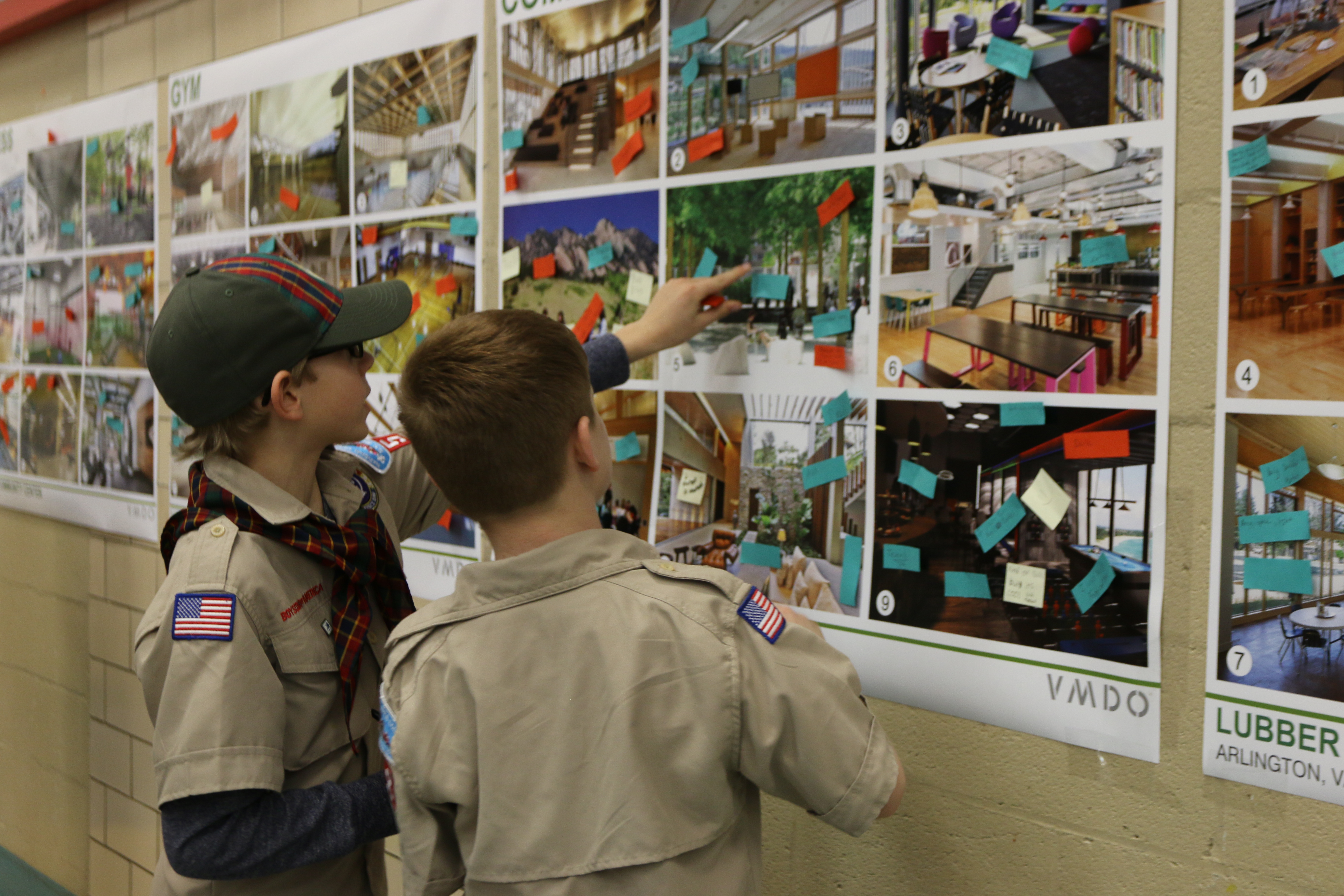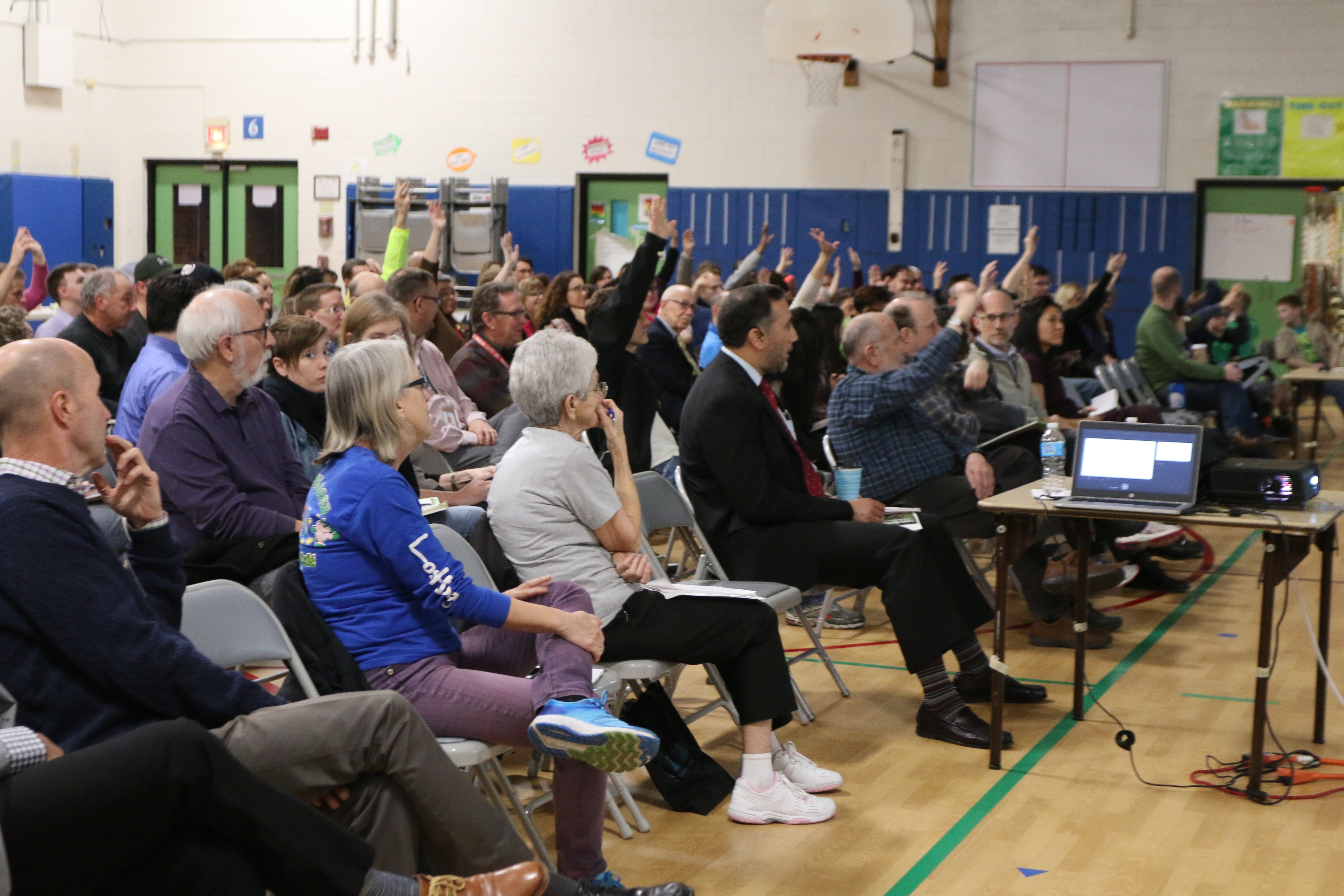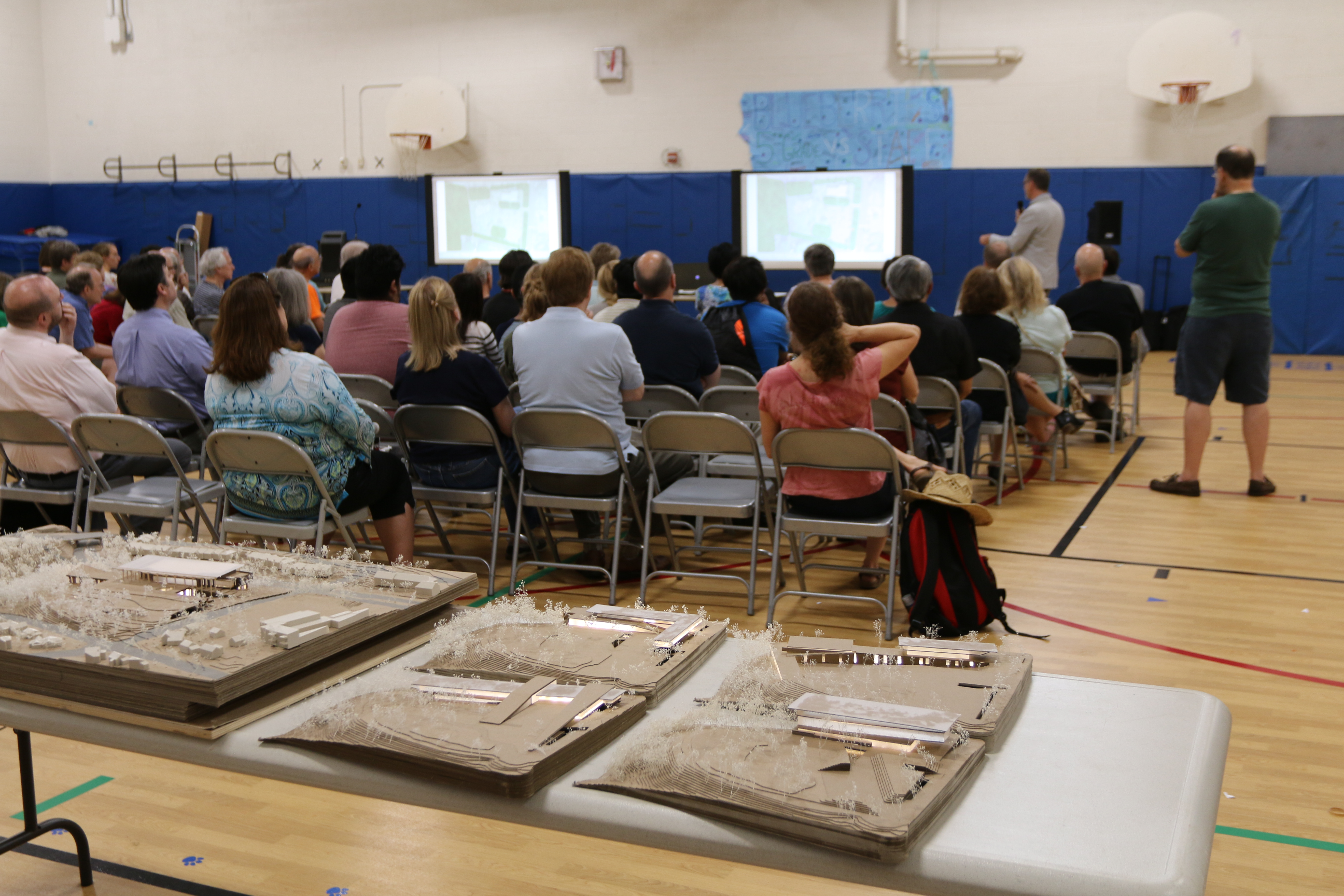In December 2016, VMDO was selected to begin work on the replacement of the 1950s-era Lubber Run Community Center in Arlington, Virginia. In addition to a new community center building, the project includes new outdoor recreation spaces and amenities as well as underground parking on a 4.5 acre site.
The center is located in Lubber Run Park, a precious natural resource in urban Arlington County. Connection to nature and preservation of open space were essential to designing the new building, and as a result, parking and some programs are located underground to allow for increased outdoor amenities at ground level.

The process of designing the center highlights the importance of authentic community engagement. Robust local partnerships supported solutions for a sustainable, place-based design that integrates interior and exterior public and programmed spaces. The project seeks to blur the distinction between indoors and outdoors and promote the health and wellness of building occupants. Care was taken to maximize views to the outdoors from within, to provide dynamic daylighting to all of the occupied spaces, and encourage occupants to feel connected to the park landscape around them.
Together, Arlington Parks and Recreation and VMDO developed a context-specific community engagement process involving a series of active public workshops that facilitated community feedback in an effort to promote equity, access, public health, and sustainable design. The team applied an empathetic approach to gathering cross-generational and inter-disciplinary voices that informed the design of numerous blended spaces connected to nature – spaces inside, outside, and thresholds in between, interweaving building and landscape.
Through community meetings, online feedback, and on-site engagement, community voices helped inform the initial stages of design. The first meeting focused on understanding the site and neighborhood, spatial characteristics and materials of different program spaces, and community fears and desires for the project. Design drivers were derived from this feedback as well as from existing site features, board directives, and sustainability goals. At subsequent meetings, multiple schemes were presented, evaluated and refined, resulting in a hybrid solution that is integrated into the park while still presenting a strong recognizable presence in the community.
Through the integration of building and landscape, the project offers a holistic response to an urban challenge – ultimately creating public space that is greater and greener for residents.



